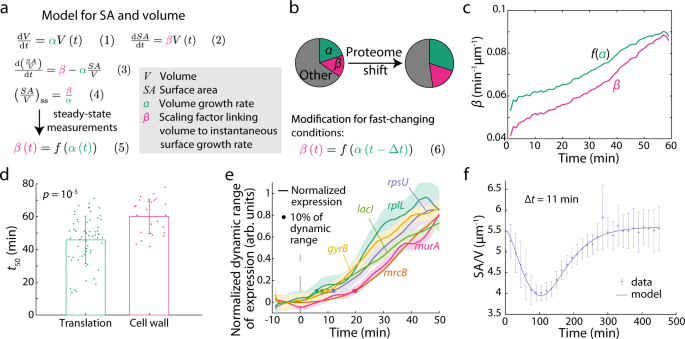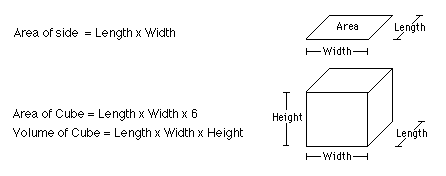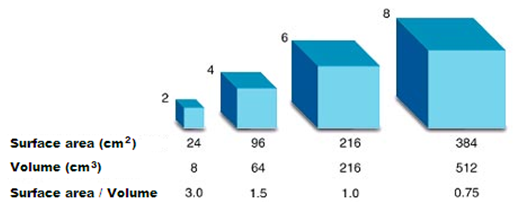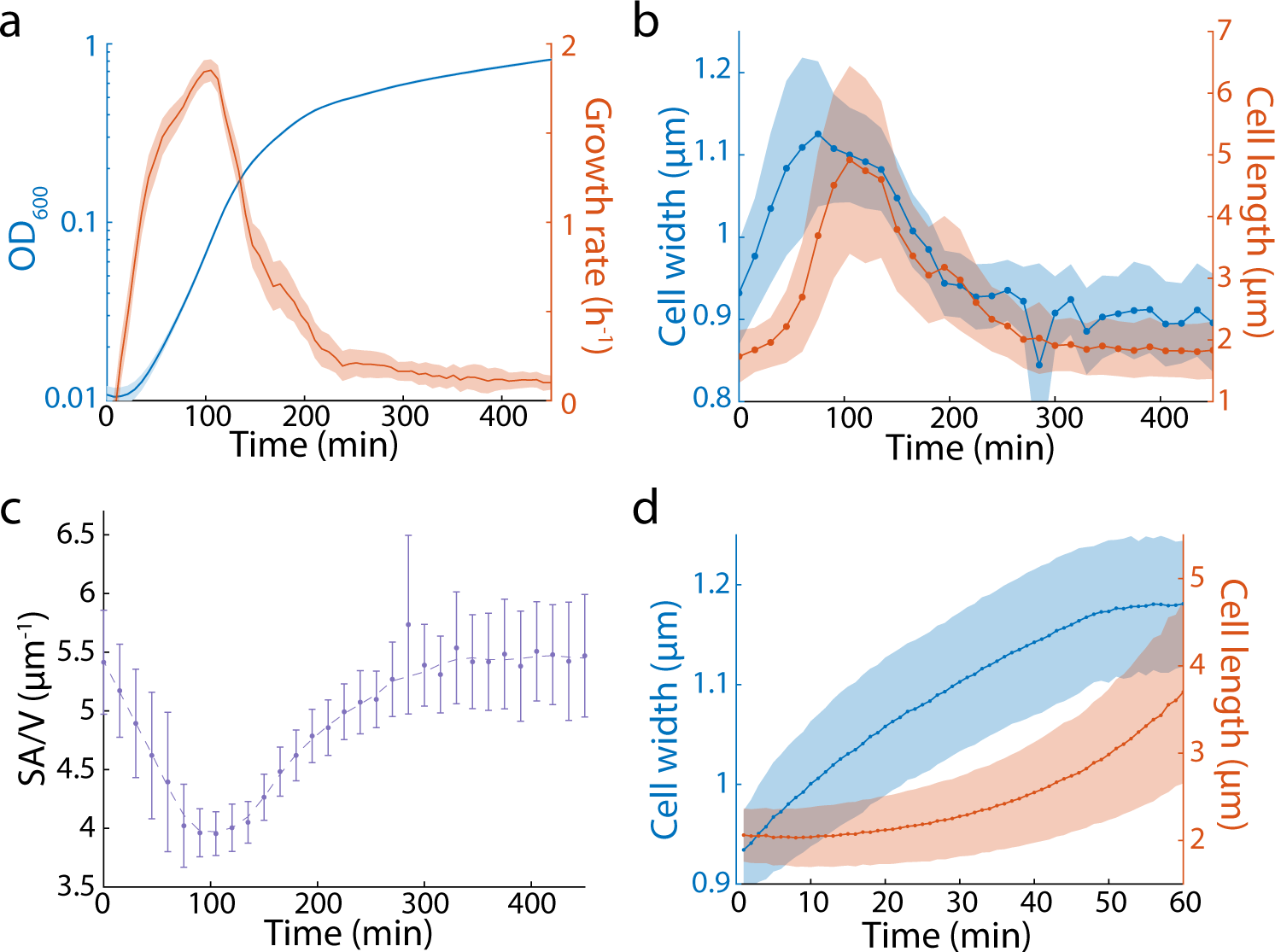Why Does Surface Area to Volume Ratio Matter
Cragg in Developments in Aquaculture and Fisheries Science 2016 Respiration. To minimize the losses and gains through the fabric of a building a compact shape.

Surface Area To Volume Ratio Video Lesson Transcript Study Com
Surface area to volume ratio Organisms must take in food oxygen and water and other essential substances from the environment.
. Surface area to volume ratio. Surface Area to Volume Ratio. Typically larger cells result in a smaller surface to volume ratio.
The important point is that the surface area to the volume ratio gets smaller as the cell gets larger. The surface area of the sphere will be 4πr 2. Consequently a small SV ratio implies minimum heat gain and heat loss.
In order to minimise unwanted losses and gains through the fabric of a building its desirable to design a compact shape without. A small surface to volume ratio means that a large amount of living matter has a small surface through which nutrients oxygen and wastes can diffuse which means that such a cell will have more difficulty taking in sufficient nutrients and oxygen and eliminating wastes. Video summarySurface area to volume ratio affects how large cells can be and explains why transport systems are needed to provide materials to the many cel.
More the surface area to volume ratio more is the diffusion. The surface area to volume ratio SV is an important factor for the performance of a building. Thus if the cell grows beyond a certain limit not enough material will be able to cross the membrane fast enough to accommodate the increased cellular volume.
Changes in the surface area to volume ratio have important implications for limits or constraints on organism size and help explain some of the modifications seen in larger-bodied organisms. The smaller the object the bigger the surface area to volume ratio. It means that the surface area to volume ration increases with the decrease in radius of the sphere and vice versa.
More reactant particles are exposed at the surface the frequency of collisions between reactant particles increases. The large surface-area-to-volume ratio of larvae the currents generated by ciliary beating and the short internal diffusion distances mean that no separate respiratory organ is necessary for respiratory demands. The surface area to volume ratio SAV limits cell size because the bigger the cell gets the less surface area it has for its size.
However the shape does matter quite a bit. Surface area to volume ratio in simple means the size of surface area to the volume of substance that can pass through it at a particular time. The diced cubes had a faster rate of about 74 and 88hr.
Plants also need carbon dioxide for photosynthesis. Students will be able to. Surface area of sphere 4πr 2.
The ratio of surface area to volume can be extremely useful in everyday scenarios. The surface area to volume ratio is a way of expressing the relationship between these parameters as an organisms size changes. It can also be conclude here that when given volume is divided into smaller piece the surface area increases.
Take a look at surface area volume the surface-area-to. Solve real-world and mathematical problems involving area volume and surface area. So small SV ratios imply minimum heat gain and minimum heat loss.
Amoeba and some bacterias are flat and have large surface area to volume ratio. The volume of the sphere 43 πr 3 Therefore the surface area to the volume ratio will be 4πr 2 43 πr 3 3r. So once again both have increased and volume increased more than surface area.
This is important if you are a cell that depends on diffusion through your cell wall to obtain oxygen water and food and get rid of carbon dioxide and waste materials. The first cylinders volume is again 314 meters cubed and the second cylinders volume is 628 meters cubed. In high rise design surface area to volume ratio is a significant factor in the amount of energy used to keep the building air conditioned and useable for its design function.
Explain why higher surface area to volume ratio leads to faster dissolution rate using the terms surface area and. Skinnier people with a higher surface area-to-volume ratio tend to prefer higher ambient temperatures because they loose more thermal energy per unit mass than more muscular or chubby people who prefer colder ambient temperatures because they need the heat loss to equal the greater amount of internal heat generated within them to maintain homeostasis. This was predicted as diffusion occurs through all the surfaces so will occur faster through a larger surface area.
The greater the surface area the greater the potential heat gain or loss through it. It would be interesting to do more replicates with different surface areas and plot the increase in mass against the surface area to volume ratio SAV. The best way to answer this is it depends In reality if they have the same ratios in side lengths or if they are the same shape then yes a larger surface area implies a greater volumeHowever the shape does matter quite a bit.
So the diffusion rate is very high due to large surface area. In this regard what happens to the surface area to volume ratio as a cell increases in size. No identified respiratory structures develop during the veliger stage and.
If the surface area to volume ratio of a reacting solid is increased. Use mixtures of different sizes of salt particles to achieve a specific dissolution rate profile. The greater the surface area the more the heat gain loss through it.
This means that there is a smaller diffusion pathway which increases the metabolic rate. Volume of sphere 43πr 3 Thats all that you need to know about surface area to volume ratio. The larger the surface the more heat transfers either from the building to outside in the winter or vice versa in the summer.
Also asked does a container with a larger surface area always have a greater volume. The surface area to volume SV ratio the three dimensional extrapolation of the perimeter to area ratio is an important factor determining heat loss and gain.

Cells Surface Area To Volume Ratio Pathwayz

How Changes In Dimension Affect Surface Area Volume Video Lesson Transcript Study Com

Lesson Explainer Nanoparticles Nagwa

Changes In The Surface Area To Volume Ratio Of A Cube The Smaller The Download Scientific Diagram

Two Cubes Have Their Volumes In The Ratio 1 27 Then Find The Ratio Of Their Surface Areas Geeksforgeeks

Precise Regulation Of The Relative Rates Of Surface Area And Volume Synthesis In Bacterial Cells Growing In Dynamic Environments Nature Communications
Cell Size Scale Surface Area Volume Ratio Organelles Video Lesson Transcript Study Com

How Changes In Dimension Affect Surface Area Volume Video Lesson Transcript Study Com

Surface Area To Volume Ratio Calculator

Cell Size Surface Area And Volume

Cells Surface Area To Volume Ratio Pathwayz

Cell Size Scale Surface Area Volume Ratio Organelles Video Lesson Transcript Study Com

Precise Regulation Of The Relative Rates Of Surface Area And Volume Synthesis In Bacterial Cells Growing In Dynamic Environments Nature Communications
Changes In The Surface Area To Volume Ratio Of A Cube The Smaller The Download Scientific Diagram

Class 9 Surface Areas And Volumes Notes Leverage Edu

Surface Area To Volume Ratio Video Lesson Transcript Study Com

Surface Area To Volume Ratio Explained Youtube

The Ratio Of Surface Area To Volume For A Cube And A Sphere Wolfram Demonstrations Project Science Lessons Cell Transport Social Science

Comments
Post a Comment